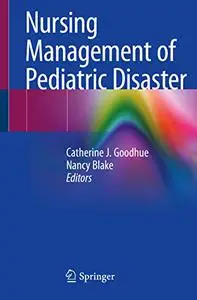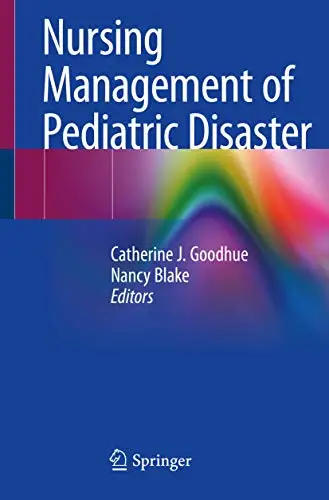Catherine J. Goodhue, Nancy Blake, "Nursing Management of Pediatric Disaster"
English | 2020 | pages: 420 | ISBN: 303043429X | EPUB | 19,0 mb
English | 2020 | pages: 420 | ISBN: 303043429X | EPUB | 19,0 mb
Chapter 1. Introduction Overview of disaster planning and importance of disaster planningNancy Blake PhD and Cat Goodhue MN
Chapter 2. History of disaster nursing Discussion of the evolution of disaster nursing; how the military plays a roleJohn Murray PhD
Chapter 3. National disaster planning/policy Directives from the federal government; the role the fed/state/local government interface in a disaster; national strategic stockpile;Eileen Fry-Bowers PhD
Chapter 4. HICS structure The phases of disaster; how agencies interface during a disaster; based on hierarchy in firefighting; how this translates to local hospital disaster structure Michelle Moran PhD
Chapter 5. Types of disasters: man-made (CBRNE and active shooter) and natural Incidence in recent history; number of people and specifically children injured or killed; child-specific differences in disaster planning for CBRNE and active shooter including supplies and antidotesDr. Paul Severin
Chapter 6. General disaster preparedness for families Follow FEMA/Red Cross planning for 72 hours self-sufficiency; family communication plans; supply cache and how to rotate expiring supplies; planning for pets; need to have printed document with phone numbers since cell towers may be affected and power may run out Jessica James MSN and Anna Camia MSN
Chapter 7. Pediatric issues (developmental, physical, emotional) How children grow physically and importance of this (drug doses; equipment differences); different developmental levels (infant, toddler, pre-schooler, school-age, adolescent); how they respond to stressful situations; dependence on adult/caregiver for emotional and physical support Lori Silao PhD
Chapter 8. Children with special healthcare needs Dependence on adult/caregiver; medical technology devices and need for electricity/alternate power source; extra supplies and medications/TPN; Emergency Information Form and need for updated forms and family having hard and electronic copies;David Markenson MD
Chapter 9. Decontamination Process based on age and developmental level; exposure/need for warmth; family decon; how healthcare facilities can planKatherine Meyer MSN
Chapter 10. Disaster shelters How they should be set up; first aid/medical; food and water; sanitation; separating families from single adults; dealing with unaccompanied minors and safety and "babysitting"; activities to aid with normalcyMarian Nowak, DNP, RN, MPH, CSN, PN, FAAN
Chapter 11. Family reunification Lessons learned from recent disasters; possible methods for reunification; implications for healthcare facilities, schools, daycare, etcKathy Stevenson
Chapter 12. Post-disaster effectsa. resiliency - Stacia Hays DNP - what is resiliency; how to support childrenb. PTSD - Margaret Quinn DNP - incidence of PTSD; how to assess; psychological first aid; referrals to psych when necessary - how to determine; triage
Chapter 13. Hospital preparednessa. Drilling for peds - creating realistic drills; engaging staff; just in time training; learning modules; table top; web-based education/videosb. DRC concept/partnerships/MOUsc. Triage - where/whod. Making room - cancelling elective surgeries; discharging patients; creating critical care beds; utilizing space for surge;e. Evacuation including NICU, PICU, genera
My Link



